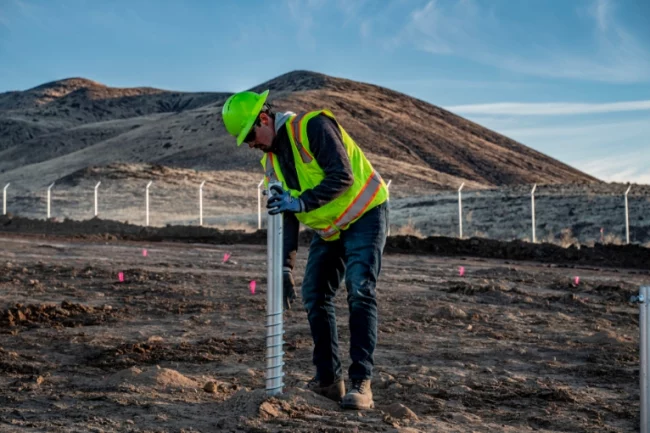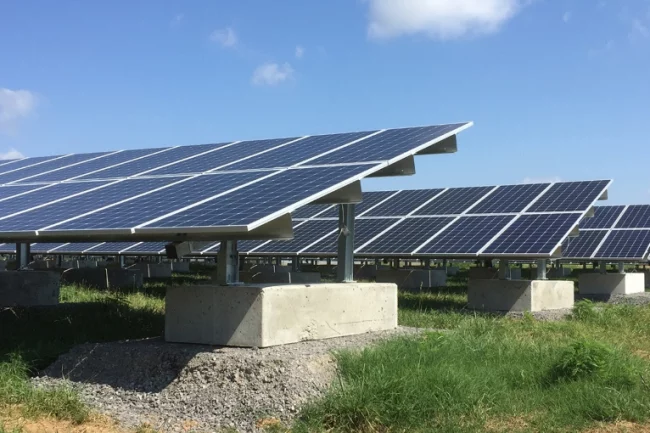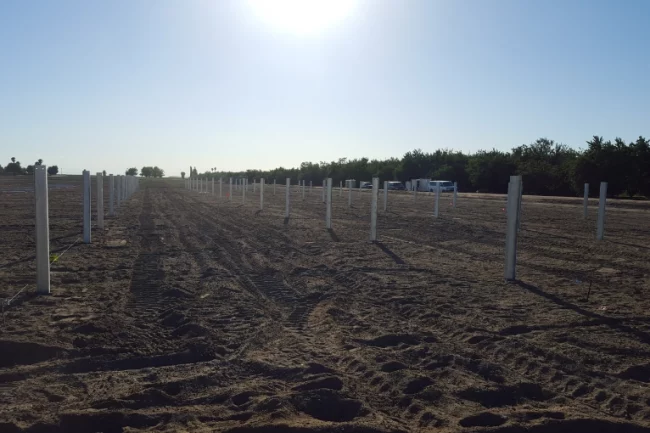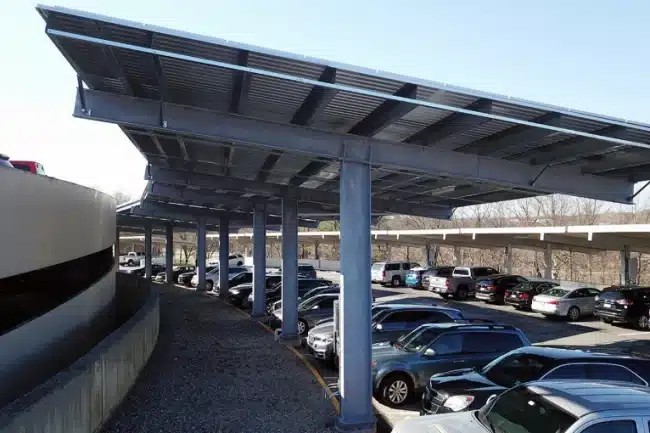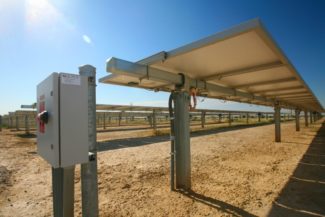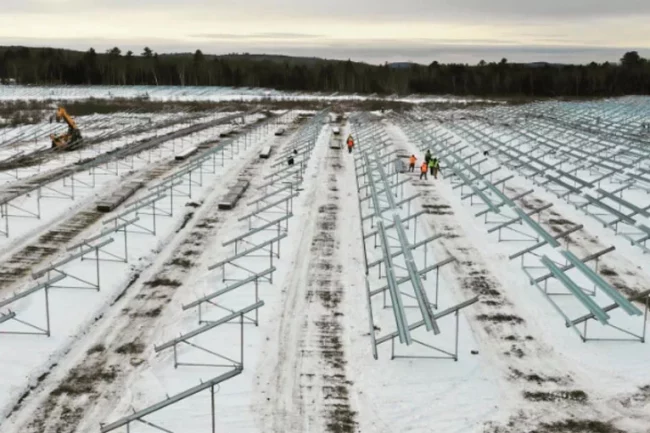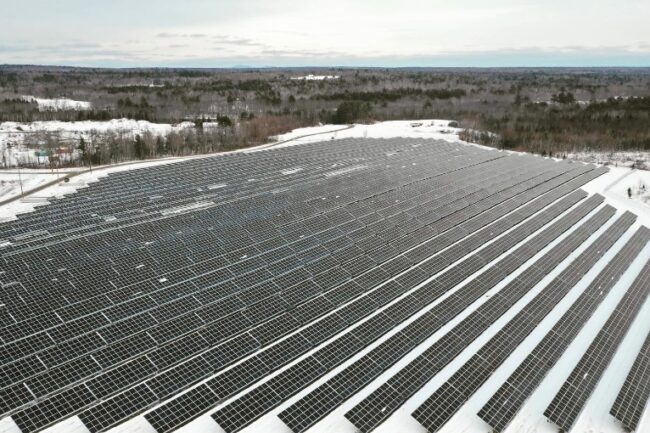A conversation with Terrasmart experts on foundation risks and rewards
By Andrea Oliver, Sr. Product Marketing Manager, Terrasmart
As utility solar developers well know, “perfect” sites come at a premium. That’s why they’re constructing more PV on rocky, hilly terrain with down-to-earth pricing. Such cheap, but challenging, sites can seem like a safe route to higher margins. But construction issues can quickly turn good projects into quagmires.
Last fall Terrasmart joined Wood Mackenzie to host a webinar with utility solar professionals about important considerations in selecting foundations for ground mount projects. The event, “Managing utility solar risks: selecting the right foundation for the right site,” was led by Terrasmart’s Director of Engineering, Michael Faraone, Ph.D., P.E. and Fixed Tilt Business Unit Manager Chris Lantz. Research Analyst Sagar Chopra from Wood Mac’s Power & Renewables Group moderated the conversation and fielded questions from the event’s 150+ attendees.
In talking with Michael and Chris, I learned that choosing the right ground-mount foundation is key to success. It’s critical to weigh the costs and benefits of each option to fully understand the potential impact on risks and returns. The webinar serves as a guide to doing exactly that. During the presentation, Michael and Chris presented an industry-first study that compared ground screws and piles on both soft and rocky terrains.
With a combined 20+ years of experience in large-scale solar design, engineering, and construction, Michael and Chris shared their objective perspectives on each option for the best path to project success. The results of this study are illustrated in this webinar and published in a Terrasmart whitepaper, “The Guide to Breaking Ground for Solar Projects: Screws vs. Piles Foundation”.
A myriad of questions were explored during the Q&A portion of the webinar. Here are some highlights from the participants. (names have been omitted for attendee privacy)
1. What are the most important factors to determine which foundation type to use?
The best way to determine the right option for your project — one that is optimized in terms of budget, timelines, and risk — is to compare the options against project costs, schedules, your site’s terrain, specific soil types, and refusal risk (see Figure 1 below).
Foundation durability, installation speed, and terrain suitability all play a part in ensuring solar projects are delivered on time and within budget.
- Ground screws are quick to install and ideal for tough sites but require special equipment, more units than piles, and a higher upfront material cost.
- Driven piles are affordable and reliable with lower upfront material and construction costs on typical sites, but are problematic on rugged terrain.

Figure 1: Balancing the costs and benefits of ground screws versus driven piles
2. When looking at the two 10MW sites in the case study – one with soft ground and the other tough terrain – at what point would pile refusals make ground screws more cost-effective?
Taking materials and installation costs into account, anything over a 29% refusal rate makes a site a good candidate for ground screws. Beyond this breakeven point, the installation cost for driven piles would exceed the $400,000 needed to install a ground screw system as shown in Figure 2.

Figure 2: Ground screws are more economically viable than piles when refusals rise above 29%
To keep to the same 26-day schedule as ground screws, piles can experience a refusal rate of up to 7%. Beyond that, however, each additional 15% of pile refusals adds an extra day to the schedule, as seen in Figure 3.

Figure 3: Schedules take a hit when pile refusals go beyond 7%
3. What is the typical distribution of the usage of screws between small sites – 20MW and below – medium sites between 20MW and 75MW, large sites between 75MW and 150MW, and very large sites over 150MW?
Thus far, we have most commonly seen ground screws installed on smaller sites producing roughly 25 MW and less. Out of those smaller sites, ground screws make up about 30% of the project and on medium sized projects, about 10% use ground screws. Larger sites producing 150 MW or more, between 5-10% contain ground screw foundations.
4. Can you tell before attempting to drive a particular pile whether the ground will refuse it? Or do you only know by trying?
You can get an idea based on a geotech report and on pull testing. If there is a constant ledge, then you can anticipate refusal. A site with predominantly cobble would present a situation where you don’t know until you try.
5. Is a sloping site more difficult because it’s often associated with rocky soil and refusal or is the slope itself a direct problem?
A sloping site brings its own unique challenge in that the racking structure will require additional adjustability to account for slopes and undulation. We’ve seen our fair share of both rocky and sloping sites, however these two issues can be mutually exclusive.
6. How do you determine frost heave design depth for ground screws and do the independent engineers (IE’s) generally agree with the methodology used?
Determining frost depth for ground screws is based on either state building codes, geotechnical report recommendations, or regional site maps of air freezing indices. Independent engineers generally accept recommendations provided by a geotechnical engineer or state building code because they are typically more conservative.
7. Does the ground screw installation rate account for time to predrill?
Yes. This number accounts for both predrilling and installation of the screw. Depending on the project timeline and size, this number can be scaled up with the addition of more machines onsite.
8. Please describe the pre-drilling process and why the cost is constant. Wouldn’t pre-drilling in dense, cobbly soils or bedrock take longer than in soft soils and therefore cost more?
The pre-drilling process for ground screws consists of drilling a 3-inch diameter hole followed by the installation of the ground screw. It is true that drilling would be more efficient in softer soils. However, because ground screws are used to mitigate any risk of refusal we can assume that worst-case subsurface conditions are present – this means we can apply our cost estimate as a constant variable.
9. Does Terrasmart have any recommendations regarding frost heave in northern climates?
Typical solutions to combat frost heave have included increasing the embedment depth of the foundation, placing concrete at the base of each pile to strengthen and prevent further uplift, adding a slick coat to reduce adfreeze force, adding PVC sleeves filled with gravel, and placing insulation around the pile to restrict frost penetration. All of the aforementioned methods add additional cost and time, not to mention increased risk with a deeper embedment. The further down you go, the greater potential there is to run into a refusal.
Ground screws combat frost heave in three ways:
- The threads on the ground screw are embedded below the frost line depth, which mitigates ice lensing force.
- Ground screws have a smaller perimeter area relative to other foundations, reducing frost heave force.
- The threaded portion of a ground screw can mobilize a large amount of tension to resist the force of frost heave as compared to other foundations.
10. How important is resistivity/corrosivity testing in the geotechnical assessment given the galvanized construction?
It could play a role in corrosion and design life, so there is some importance. We typically allow for sacrificial steel to meet the required design life. Terrasmart typically takes a soil sample during onsite testing to calculate the corrosion rate.
11. What would be your recommendation for a limestone-dominant subsurface?
It depends on the depth of the limestone, but if the limestone was in the typical install depth of six to ten feet, we would suggest screws.
Summing it all up
As one of the only providers of both ground-screw and driven-pile foundations, we can guide EPCs and developers through technology-neutral evaluations to support best-in-class PV projects. Watch the recorded version of this webinar for a deep dive into driven piles versus ground screws, including:
- A cost/benefit analysis between ground screws and pile foundations
- The advantages and risks in a premium environment compared to a high-refusal site
- The cost and schedule impact of remediating piles driven to refusal using various methods
- A break-even time and budget analysis comparing both foundations

